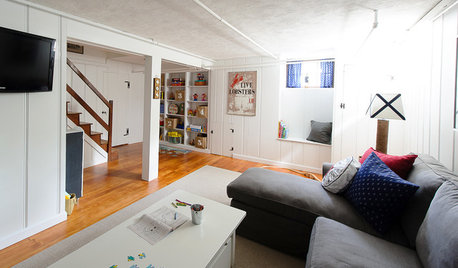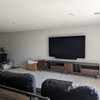Insulation around windows - how tight?
2ajsmama
15 years ago
Related Stories

WINDOW TREATMENTSEasy Green: 9 Low-Cost Ways to Insulate Windows and Doors
Block drafts to boost both warmth and energy savings with these inexpensive but effective insulating strategies
Full Story
GREEN BUILDINGInsulation Basics: Heat, R-Value and the Building Envelope
Learn how heat moves through a home and the materials that can stop it, to make sure your insulation is as effective as you think
Full Story
REMODELING GUIDESCool Your House (and Costs) With the Right Insulation
Insulation offers one of the best paybacks on your investment in your house. Here are some types to discuss with your contractor
Full Story
GREEN BUILDINGEcofriendly Cool: Insulate With Wool, Cork, Old Denim and More
Learn about the pros and cons of healthier alternatives to fiberglass and foam, and when to consider an insulation switch
Full Story
MATERIALSInsulation Basics: What to Know About Spray Foam
Learn what exactly spray foam is, the pros and cons of using it and why you shouldn’t mess around with installation
Full Story
KNOW YOUR HOUSEKnow Your House: The Basics of Insulated Concrete Form Construction
Get peace and quiet inside and energy efficiency all around with this heavy-duty alternative to wood-frame construction
Full Story
ROOM OF THE DAYRoom of the Day: Right-Scaled Furniture Opens Up a Tight Living Room
Smaller, more proportionally fitting furniture, a cooler paint color and better window treatments help bring life to a limiting layout
Full Story
GREEN BUILDINGInsulation Basics: Designing for Temperature Extremes in Any Season
Stay comfy during unpredictable weather — and prevent unexpected bills — by efficiently insulating and shading your home
Full Story
GREEN BUILDINGInsulation Basics: Natural and Recycled Materials
Consider sheep’s wool, denim, cork, cellulose and more for an ecofriendly insulation choice
Full Story
BASEMENTSBasement of the Week: Shipshape Style on a Tight Budget
Nautical accents and marine colors send a once-dark basement toward a brighter horizon
Full StoryMore Discussions









sierraeast
homebound
Related Professionals
Brownsville Kitchen & Bathroom Designers · West Virginia Kitchen & Bathroom Designers · Adelphi Kitchen & Bathroom Remodelers · Garden Grove Kitchen & Bathroom Remodelers · York Kitchen & Bathroom Remodelers · Aurora General Contractors · Decatur General Contractors · Hutchinson General Contractors · Kilgore General Contractors · San Carlos Park General Contractors · San Elizario General Contractors · San Marcos General Contractors · Springboro General Contractors · Tuckahoe General Contractors · Warren General Contractorsmightyanvil
2ajsmamaOriginal Author
davidro1
2ajsmamaOriginal Author
mightyanvil
suero
davidro1
2ajsmamaOriginal Author
2ajsmamaOriginal Author
manhattan42
2ajsmamaOriginal Author
davidro1
2ajsmamaOriginal Author
davidro1
sierraeast
2ajsmamaOriginal Author
annemarie29
2ajsmamaOriginal Author